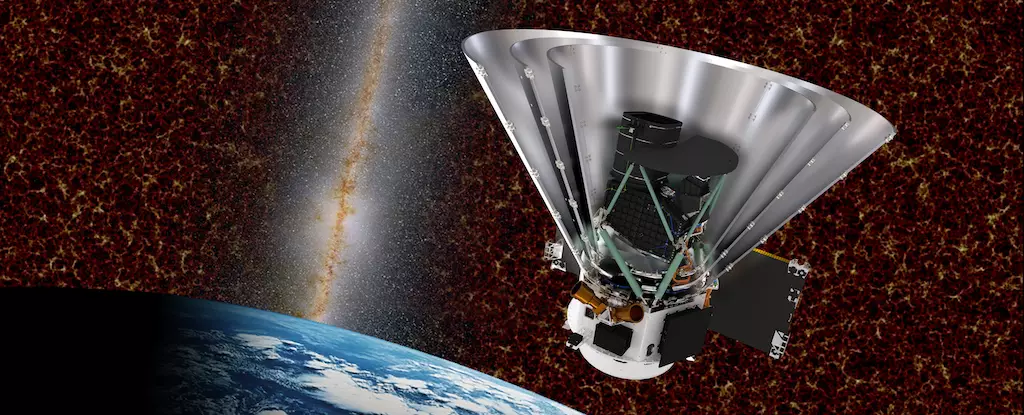NASA is on the brink of launching an ambitious mission that promises to transform our understanding of the universe. Scheduled for liftoff on February 28, the SPHEREx spacecraft, or Spectro-Photometer for the History of the Universe, Epoch of Reionization and Ices Explorer, aims to produce the most comprehensive 3D map of the cosmos ever created. This groundbreaking initiative will meticulously analyze every pixel of the sky, revealing an extraordinary infrared spectrum composed of 102 distinct colors. Each pixel will tell a story about the cosmic objects it captures—be they comets, stars, galaxies, or entire planetary systems.
The scope of SPHEREx is awe-inspiring. As Olivier Doré, the project scientist from NASA’s Jet Propulsion Laboratory, notes, “Whatever your favorite object in the sky is, we will measure its spectrum.” This ambitious goal underscores the mission’s foundational purpose: to delve deep into the genesis of the universe while searching for the essential ingredients that may foster life.
SPHEREx is driven by three main scientific objectives, each addressing fundamental inquiries about our universe. First, the mission seeks to explore the conditions of the universe just moments after the Big Bang. This exploration could yield invaluable insights into the nature of cosmic evolution during the inflationary phase, a time when the universe expanded dramatically, altering its structure forever.
The second objective is both expansive and intricate, aiming to quantify the total amount of light emitted by all galaxies throughout time. Such data could help answer age-old questions about the nature of cosmic history, shedding light on how galaxies formed, interacted with each other, and evolved in the grand tapestry of cosmic time.
Thirdly, SPHEREx will investigate the presence of water and other vital chemicals in our Milky Way galaxy, pivotal ingredients for life as we understand it. By monitoring the spectrum of light from celestial bodies, researchers can identify the chemical makeup of molecular clouds where new stars—and potentially new planets—are born. This could help illuminate the possibilities for life beyond Earth.
A Grand 3D Map of the Universe
The culmination of SPHEREx’s efforts will be a colossal 3D cosmic cartogram featuring approximately 450 million galaxies. This map not only serves as a visual representation of galaxy distribution but also plays a critical role in testing inflationary models—an essential aspect of modern cosmology. If the galaxies appear uniformly distributed, it would support simpler inflationary theories, potentially tied to an elusive particle known as the inflaton. Conversely, discovering uneven distribution could imply the influence of unknown forces shaping the cosmos.
The potential applications of this extensive 3D map are spectacular. Beyond charting cosmic history, it promises to aid scientists in estimating the entire light output emitted by galaxies since time began. Each measurement provides astronomers with clues to the origin and movement of light across vast distances, as well as understanding its evolution over billions of years.
The quest for extraterrestrial life also takes center stage in SPHEREx’s mission. By dissecting light absorbed and emitted by molecules within star-forming clouds, the spacecraft aims to detect water ice, carbon dioxide, and other essential compounds. Each element has a unique spectral signature, allowing researchers to pinpoint their presence by analyzing how light interacts with these substances within cosmic mediums.
With plans to conduct over nine million observations, SPHEREx will gather critical data in 3D along its observational path, effectively illuminating the chemical landscape of potential life-sustaining environments. If these vital compounds are identified in significant concentrations, the chances increase that they could be integrated into forming planets, extending fertile conditions for life.
The treasure trove of data amassed by SPHEREx will not only stand alone but will also complement the findings of other astronomical missions, such as the James Webb Space Telescope (JWST). While SPHEREx offers broad surveys of cosmic objects, JWST focuses on narrow but in-depth examinations. As astronomer Gary Melnick notes, “If SPHEREx discovers particularly intriguing locations, Webb can study that target with higher spectral resolving power and in wavelengths that SPHEREx cannot detect.” This collaborative approach promises rich advancements in our understanding of the universe.
Ultimately, SPHEREx is on a mission to redefine the limits of astronomical knowledge. From illuminating the universe’s origins to exploring the chemical building blocks of life, this upcoming launch heralds a new era in cosmic exploration where curiosity and technology converge to unravel the mysteries of the cosmos. The commitment to unraveling such profound questions underscores humanity’s relentless desire to understand our place in the universe, confirming that the sky is indeed not the limit—it’s just the beginning.

